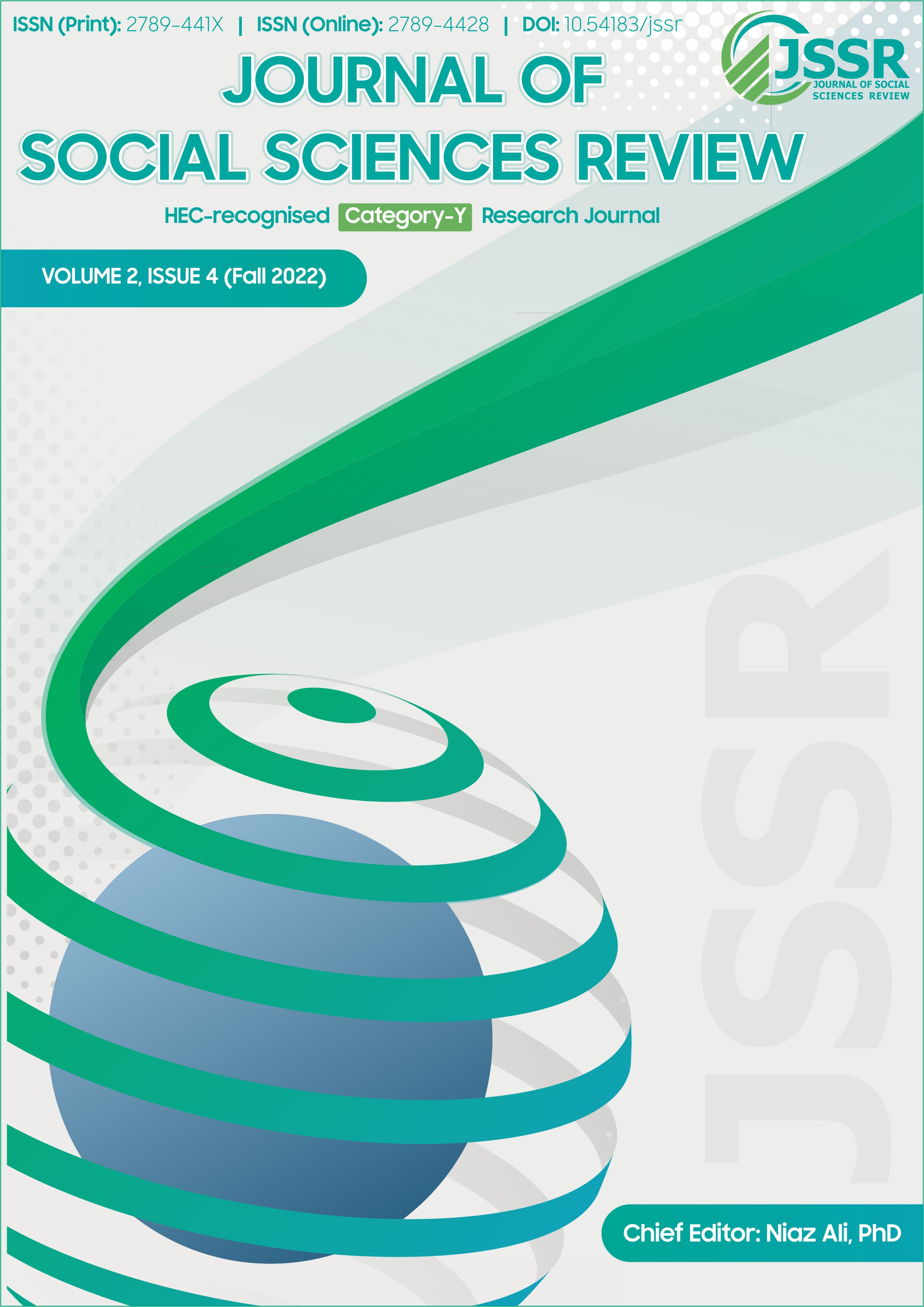Narratological Analysis of English as a Second Language Students’ Success Stories
DOI:
https://doi.org/10.54183/jssr.v2i4.49Keywords:
Success Stories, Conversational Narrative Analysis, Polanyi’s Framework, NarratologyAbstract
This article attempted to analyze the success stories of students at the tertiary level in an ESL context during the COVID-19 remote learning mode. This paper provided a meta-analysis of the narrative analysis using Polanyi’s framework (Polanyi, 1981). I argued that these success stories provided data to evaluate the conversational narrative framework on structural components and this meta-analysis highlighted the problems as well as the potentials of Polanyi’s conversational narrative model of analysis in the field of narratology. Data revealed that such evaluation of a conversational narrative’s non-Story world clauses offered critical insights as Polanyi delineated in her model.
References
Aukerman, M. (2006). A Whole Different Story: The Discursive (Re)construction of Student Ability in Teacher-Generated Assessment Narratives. 21(2), 13.
Barkhuizen, G. (2011). Narrative Knowledging in TESOL. TESOL Quarterly, 45(3), 391–414. https://doi.org/10.5054/tq.2011.261888
Barthes, R., & Duisit, L. (1975). An Introduction to the Structural Analysis of Narrative. New Literary History, 6(2), 237. https://doi.org/10.2307/468419
Blum-Kulka, S. (2009). “You Gotta Know How to Tell a Story”: Telling, Tales, and Tellers in American and Israeli Narrative Events at Dinner. 43.
de Ramirez, S. B. B. (1997). Storytellers and Their Listener-Readers in Silko’s “Storytelling” and “Storyteller.” American Indian Quarterly, 21(3), 333. https://doi.org/10.2307/1185512
Hornberger, N. H. (2002). Multilingual language policies and the continua of biliteracy: An ecological approach. Language Policy, 1(1), 27–51. https://doi.org/10.1023/A:1014548611951
Labov, W., & Waletzky, J. (1997). Narrative analysis: Oral versions of personal experience. Journal of Narrative & Life History, 7(1-4), 3–38. https://doi.org/10.1075/jnlh.7.02nar
Macaro, E., Akincioglu, M., & Dearden, J. (2016). English Medium Instruction in Universities: A Collaborative Experiment in Turkey. Studies in English Language Teaching, 4(1), 51. https://doi.org/10.22158/selt.v4n1p51
Martin, W. (1986). Recent theories of narrative / Wallace Martin. Cornell University Press.
Polanyi, L. (1989). Telling the American Story: A Structural and Cultural Analysis of Conversational Storytelling. https://books.google.com.pk/books?id=UY7YAAAAMAAJ&hl=pt-PT&source=gbs_book_other_versions_r&redir_esc=y
Polanyi, L. (1981). What Stories Can Tell Us about Their Teller’s World. Poetics Today, 2(2), 97. https://doi.org/10.2307/1772192
Polanyi, L. (2005). The Linguistic Structure of Discourse. In D. Schiffrin, D. Tannen, & H. E. Hamilton (Eds.), The Handbook of Discourse Analysis (1st ed., pp. 265–281). Wiley. https://doi.org/10.1002/9780470753460.ch15
Prince, Gerald. (1973). A grammar of stories an introduction. Mouton; /z-wcorg/. https://doi.org/10.1515/9783110815900
Propp, V. I︠A︡. (Vladimir I︠A︡kovlevich), 1895-1970. (1968). Morphology of the folktale. Austin: University of Texas Press
Riessman, C. K. (2001). Analysis of Personal Narratives. Handbook of Interviewing, edited by J.F. Gubrium and J.A. Holstein, Sage, Publications
Rose, H., & McKinley, J. (2018). Japan’s English-medium instruction initiatives and the globalization of higher education. Higher Education, 75(1), 111–129. https://doi.org/10.1007/s10734-017-0125-1
Schmidt, R. L. (2007). Narrative analysis2. Narrative Analysis, 23.
Watson, K. A. (1973). A Rhetorical and Sociolinguistic Model for the Analysis of Narrative. American Anthropologist, 75(1), 243–264. https://doi.org/10.1525/aa.1973.75.1.02a00150
Downloads
Published
Issue
Section
License
Copyright (c) 2023 Copyright in the Journal of Social Sciences Review is retained by the author(s). Authors also grant any third party the right to use the article freely as long as its integrity is maintained and its original authors, citation details and publisher are identified.

This work is licensed under a Creative Commons Attribution-NonCommercial 4.0 International License.
SSR's Editorial Board shares the vision of providing free access to information, education, and science for everyone, thus promoting its content through an OPEN ACCESS POLICY, fulfilling the DOAJ definition of open access. The JSSR adheres to an Open Access and Copyright Licensing Policy based on the belief that making research freely accessible to the public promotes greater global knowledge sharing.
The JSSR uses the Creative Commons Attribution-NonCommercial 4.0 International License. The authors who apply and publish in JSSR consent to abide by the copyright policy set out in the Creative Commons 4.0 license (Attribution-NonCommercial 4.0 International license).
- Copyright in the Journal of Social Sciences Review is retained by the author(s).
- Authors also grant any third party the right to use the article freely as long as its integrity is maintained and its original authors, citation details and publisher are identified.
While "By 'open access' to this literature, we mean its free availability on the public internet, permitting any users to read, download, copy, distribute, print, search, or link to the full texts of these articles, crawl them for indexing, pass them as data to software, or use them for any other lawful purpose, without financial, legal, or technical barriers other than those inseparable from gaining access to the internet itself."



